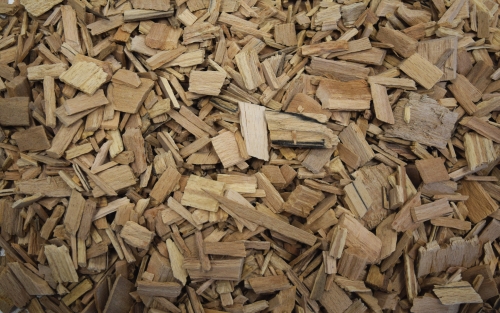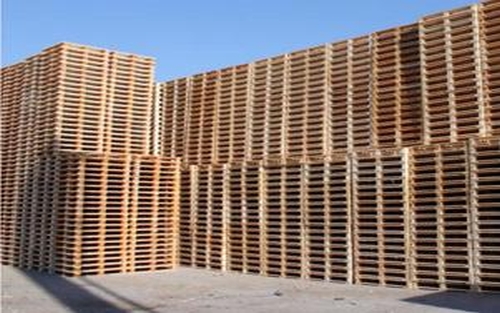Wood fuels, with which customers from Spanner Re² reach over 8,000 operating hours per year with our patented biomass gasification technology.

Electricity & heat from biomass
You can produce electricity and heat with our patented biomass gasification technology from almost any type of natural wood: Whether high-quality wood chips, forest residue wood, processed roadside greenery or shredded fruit crates.
Biomass power plant from Spanner Re² can be operated with:
- Natural wood chips, according to DIN ISO 17225-1*
- Briquettes, Diameter 30 mm
- Pellets, also industrial pellets
Which quality is for biomass gasification is necessary?
- Water content <13%
- Maximum fines content (<4 mm grain size) 30%
- Avoidance of impurities such as metals, stones or sand**
Use wood to 100 % for energy production - residual wood becomes a valuable fuel
As a complete supplier of biomass power plants, we offer you perfectly coordinated system components. For example, you can use locally available wood to 100 % as an energy source, generate electricity and heat independently of fossil raw materials, and, on top of that, achieve additional lucrative revenue streams. Our wood-fired power plants are not only efficient but also feature a high degree of fuel flexibility. See some ways to increase your investment:
Energy from forest wood
Not all wood that is obtained from forest care is suitable for material use. It would be a shame to use the wood only for heat generation. A high-quality energy source can be obtained from residual forest wood by processing it. Spanner Re² wood gasifiers generate from residual forest wood according to the principle of combined heat and power (CHP) heat and electricity.
Energy generated from roadside greenery
Johan Huber has been operating a wood gasifier with roadside greenery since 2012. He receives the residual wood free of charge from the community and processes it into a high-quality energy source for biomass gasification.
Energy generated from industrial pallets, fruit boxes
The use of industrial lumber is possible. Since 2016 one of our customers has been operating his wood gasifier with wood chips from processed industrial and large crates. He receives the material free of charge. With the help of a drawer hacker, the residual wood is shredded and processed into wood chips. Possible contaminants such as nails are sorted out via a metal separator.


Beech veneer, which occurs as waste, can generate energy with wood gasification technology
Hermann Speerschneider KG is a family company that manufactures veneer and ply wood. Any sawn timber or residual wood is processed into shredder chips with a shredder. The wood power plant of the type HKA70 from Spanner Re², which went into operation in 2020, has been generating electricity and heat from waste wood since then.

Energy generated from residual wood
At our customer Georg Hofer, a residue material is turned into valuable energy source. Since 2009 he has been operating his wood gasifier with wood chips, which he processes himself - and exclusively from untreated wood left over from his wood processing.


Energy generated from sawdust or wood shaving
Do not leave wood unused: We offer you the option of briquetting chips, dust or sawdust yourself with our press. This will give you a valuable source of energy from your leftover material. The briquettes are about 20 mm long and 30 mm in diameter.
There are many advantages with using briquettes:
- Optimal value creation
- CO2-neutral, cost-effective fuel
- High energy density
- Good flow and metering property of briquettes
- High storage stability due to compact pressure
- Space-saving
- Easy transport



* Natural wood chippings according to DIN ISO 17225-1, size: P31S, fines content: F10, water content: M10, ash content: A1.0
** Fuel Lexicon:Fines: Especially in the fines there are minerals that contribute to slag formation. The higher the fines content, the more coal dust is discharged through the ashes.
Bark content: It can increase the formation of slag, but can also increase the achievable performance.
Water content: The content has a significant influence on the temperatures to be reached and thus on the tar contents of the product gases produced.
Types of wood: Differences in the resin content or tannin content may influence the gas quality as well as effects on condensates or intermediates produced and their influence on the system technology.
Age of wood: The fresher the wood, the more volatile components are contained in the wood and can be converted into product gas. Therefore, old wood can lead to an increase in fuel consumption as well as a deterioration in gas quality and an increase in the amount of residual material.
Foreign substances: Foreign matter in wood chips such as metals and nails, but also sand and stones can lead to disruptions in the screw conveyor as well as in the gasification process. In particular, the formation of slag and the rust wear are negatively affected.




